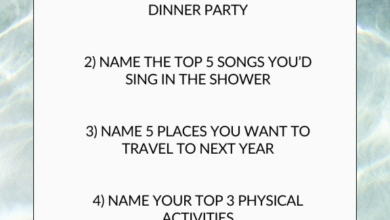What is Bate-Papo UOL? A Legacy of Digital Communication

If you grew up in Brazil or ever explored the country’s online scene, there’s a good chance you’ve heard of Bate-Papo UOL. For many, it was the first real taste of digital interaction—before social media giants took over, before smartphones were in every hand, and long before dating apps redefined virtual connections.
Bate-Papo UOL, offered by UOL (Universo Online)—one of Brazil’s largest internet service providers—launched in the early days of the internet boom. The name itself translates to “chat” in Portuguese, and that’s exactly what it was designed to do: connect people in real-time through chat rooms.
What made it special was its accessibility and simplicity. Anyone with internet access could jump into a public room, pick a topic or location-based chat, and start interacting. It was a pioneering move for a country where digital culture was just beginning to form, and it became a cultural landmark for online Brazilians.
Over the years, Bate-Papo UOL evolved with technology, integrating more features and adapting to changing user behaviors. Still, at its core, it retained that original promise: human connection through digital dialogue.
Why Was Bate-Papo UOL So Popular?
There’s a reason why Bate-Papo UOL became synonymous with online chatting in Brazil. It was more than just a chat service—it was a social hub, a dating platform, a late-night confessional, and sometimes even a job networking tool. People came for different reasons, but they stayed for the connections.
One of the main factors behind its success was timing. The early 2000s were a golden age for internet cafés, dial-up connections, and desktop-based socializing. Facebook hadn’t caught on in Brazil yet, WhatsApp didn’t exist, and even MSN Messenger was limited to one-on-one chats. Bate-Papo UOL offered something different: open rooms with dozens or even hundreds of users, sorted by age, region, or interests.
It also provided a sense of freedom and anonymity. You didn’t need to show your face or even use your real name. That made it a perfect place for shy teenagers, curious adults, and even elderly users dipping their toes into online waters.
Another key to its popularity was localization. The chat rooms were tailored to Brazilian cities and states, giving users the chance to meet others from their region. This created a stronger sense of familiarity and possibility—what started as a chat could easily become a coffee date.
Exploring the Features: What Could You Do on Bate-Papo UOL?
At first glance, Bate-Papo UOL seemed like a simple web-based chatroom. But dig a little deeper and you’d find a variety of features that made it a surprisingly rich platform for interaction. Over time, these features expanded to cater to evolving user expectations.
The service offered rooms divided by themes, such as:
- Age groups (e.g., 18–25, 30+)
- Cities and states (São Paulo, Rio de Janeiro, etc.)
- Interests (music, movies, politics)
- Relationship status (singles, flirting, LGBT+ friendly rooms)
This classification system made it easy for users to find their tribe and jump into relevant conversations. You weren’t just randomly placed in a chatroom—you could navigate based on your goals.
Eventually, Bate-Papo UOL added webcam support, which took the chatrooms to the next level. You could now see who you were talking to (if they chose to show themselves), making conversations more personal and even romantic. It wasn’t quite Zoom or Skype, but it brought a visual element that was rare at the time.
Some rooms also included moderators, which helped maintain a level of decorum and protect users from abuse or spam. Considering the scale of Bate-Papo UOL’s user base, this was a necessary step to ensure long-term viability and trust.
The Role of Bate-Papo UOL in Brazil’s Digital Social Evolution
Before Tinder or Instagram, before memes dominated WhatsApp groups, there was Bate-Papo UOL. For many Brazilians, it was the first digital space where they shared opinions, flirted, or even met lifelong friends or partners. It introduced entire generations to the dynamics of online identity and interaction.
It’s worth noting that Brazil has always had a unique and vibrant online culture. Even during the early 2000s, internet penetration in urban areas was rapidly growing, and UOL was at the forefront of that revolution. Bate-Papo was part of a larger movement that helped shape how Brazilians interact online today—whether it’s in WhatsApp groups, on Twitter (now X), or on streaming platforms like Twitch.
It also helped normalize digital intimacy. Flirting via keyboard, sharing music links, chatting deep into the night—these were all new experiences that Bate-Papo made accessible. For many users, especially teens and young adults, it became a digital rite of passage.
Furthermore, Bate-Papo UOL offered a safe space for niche communities long before social networks introduced groups and pages. LGBT+ Brazilians, for example, used UOL’s specific rooms to connect, share stories, and support one another in a time when mainstream media offered little representation.
Challenges and Decline in the Age of Social Media
Despite its massive popularity, Bate-Papo UOL couldn’t avoid the challenges brought on by changing internet habits. As smartphones took over and social media platforms like Facebook, Twitter, and WhatsApp became the norm, interest in traditional chatrooms started to wane.
User engagement declined, especially among younger generations who preferred the visual, algorithm-driven experiences offered by newer apps. Why sit in a text-based chatroom when you could scroll Instagram or send voice notes on WhatsApp?
Additionally, safety concerns began to arise. Anonymity, once a selling point, became a double-edged sword. Trolls, catfishing, and inappropriate behavior were increasingly common issues that made some users wary of the platform.
UOL tried to innovate—adding mobile support, improving interface design, and even integrating with social media—but the core format began to feel outdated. The once-bustling rooms weren’t as lively, and the audience skewed older, often nostalgic users.
Is Bate-Papo UOL Still Relevant Today?
Surprisingly, yes. While it may not have the mass appeal it once did, Bate-Papo UOL is still online and still used by a loyal base. Many Brazilians visit the site out of nostalgia, curiosity, or simply because they prefer its straightforward, no-frills interaction model.
In fact, in an age where social media feels overwhelming and algorithmic, some users find comfort in the raw simplicity of chatrooms. You enter, say what you want, and leave. No filters, no curated feeds, no likes or followers. Just conversation.
Moreover, UOL has made efforts to modernize the platform. It now includes video and voice chat, moderation tools, and even limited mobile support. It may never reclaim its throne, but it’s quietly surviving—and in today’s rapidly shifting digital landscape, that’s a victory in itself.
Final Thoughts: More Than Just a Chatroom
Bate-Papo UOL wasn’t just a digital tool—it was a cultural phenomenon. It connected millions of Brazilians in a time when the internet was still a novelty. It offered an early taste of the social web, with all its possibilities, imperfections, and humanity.
Whether you used it to find love, make friends, vent anonymously, or simply pass the time, next time you hear someone talking about their first online crush or those chaotic chatroom days, there’s a good chance Bate-Papo UOL is the reason why. And while it may not be the star of the show anymore, its influence is still very Bate-Papo UOL likely left a mark. It was the blueprint for many of today’s online interactions, and its legacy is deeply embedded in Brazil’s internet history.
So, the much alive—quietly typing away in the background of Brazil’s digital story.



